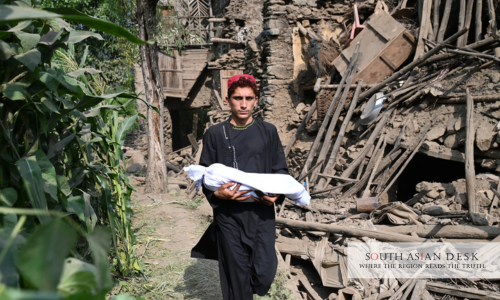Afghanistan earthquake aid crisis intensified as a magnitude 6.0 quake struck eastern provinces on Saturday, August 31, 2025, killing over 2,200 people and displacing tens of thousands, with dwindling international support hampering relief efforts in Kunar and Nangarhar.
A dire shortage of aid threatens long-term recovery in Afghanistan, where recent quakes have left thousands homeless, raising fears of an inter-generational crisis.
Why It Matters
The Afghanistan earthquake aid crisis underscores a broader humanitarian challenge in South Asia, where reduced foreign aid and regional instability, including over 2 million deportations from Pakistan and Iran, exacerbate vulnerabilities in disaster-prone nations like Afghanistan.
Background on Afghanistan’s Earthquake
On Saturday, August 31, 2025, a magnitude 6.0 earthquake hit near Jalalabad, followed by aftershocks, including a 6.2-magnitude tremor on Thursday, September 4, 2025. According to the Taliban’s health ministry spokesperson, Sharafat Zaman, the quakes killed at least 2,200 and injured over 3,600, with more than 6,700 homes destroyed. The epicentre in Kunar’s remote Shiwa district complicated rescue efforts due to mountainous terrain and heavy rainfall.
The Afghanistan earthquake aid crisis is worsened by a sharp decline in international funding. Humanitarian aid dropped to USD 767 million in 2025 from USD 3.8 billion in 2022, following the Taliban’s 2021 takeover and subsequent donor hesitancy over restrictions on women and aid workers.
Afghanistan Earthquake Aid Crisis: Scale of Devastation
The quakes flattened villages, destroying homes and livestock—key assets for rural families. In Bamba Kot, Nangarhar, 52-year-old Abdul Ghafar described living under a tarpaulin after his stone house collapsed. “We only need one tent,” he told reporters, noting officials deemed his home habitable despite cracks. According to the Afghan Red Crescent Society, over 8,000 homes were damaged, affecting more than 500,000 people.
The Afghanistan earthquake aid crisis has left survivors vulnerable as winter approaches. Thomas Barfield, president of the American Institute of Afghanistan Studies, warned that the coming cold would exacerbate conditions, with families lacking shelter and resources.
Limited International Response
The Afghanistan earthquake aid crisis is marked by a slow international response. According to India’s External Affairs Minister, S Jaishankar, India airlifted 1,000 tents and 15 tonnes of food to Kabul on Monday, September 1, 2025. The UK Foreign Secretary, David Lammy, announced GBP 1 million (USD 1.3 million) for emergency supplies on Tuesday, September 2, 2025, channelled through UN agencies. The EU pledged EUR 1 million, while China and the UAE offered limited aid.
The U.S., once Afghanistan’s largest donor, has not committed funds. A U.S. State Department spokesperson said on Monday, September 8, 2025, “We have nothing further to announce at this time,” citing concerns over Taliban mismanagement. The closure of the U.S. Agency for International Development on Tuesday, September 9, 2025, further limits prospects for aid.
Humanitarian Challenges in Afghanistan Earthquake Aid Crisis
The Afghanistan earthquake aid crisis is compounded by systemic issues. The World Health Organization reported 44 health clinics in affected areas closed due to U.S. aid cuts, impacting 363,000 people. WHO’s Dr Mukta Sharma highlighted that 90% of medical staff in Nangarhar and Kunar are male, hindering care for women due to Taliban restrictions. The World Food Programme has supplies for only four weeks, per its country head, John Aylieff.
Economic woes, including sanctions and frozen assets, deepen the Afghanistan earthquake aid crisis. Over 2 million deportations from Pakistan and Iran in 2025 have strained resources, with unemployment in the construction sector soaring post-Taliban takeover. Ibraheem Bahiss of the International Crisis Group noted, “The NGO sector is shrinking with aid cuts, and even the public sector is under strain.”
Regional Implications
The Afghanistan earthquake aid crisis could destabilise South Asia’s fragile economies. Pakistan and India, key trade partners, face disruptions, while Afghanistan’s tourism sector, contributing 5% to GDP, risks further losses. The crisis may also fuel migration, straining regional borders.
What’s Next
As the Afghanistan earthquake aid crisis persists, urgent international support is needed to provide shelter, food, and medical care, or the region risks a prolonged, inter-generational humanitarian disaster.
Published in SouthAsianDesk, September 11th, 2025
Follow SouthAsianDesk on X, Instagram, and Facebook for insights on business and current affairs from across South Asia.






